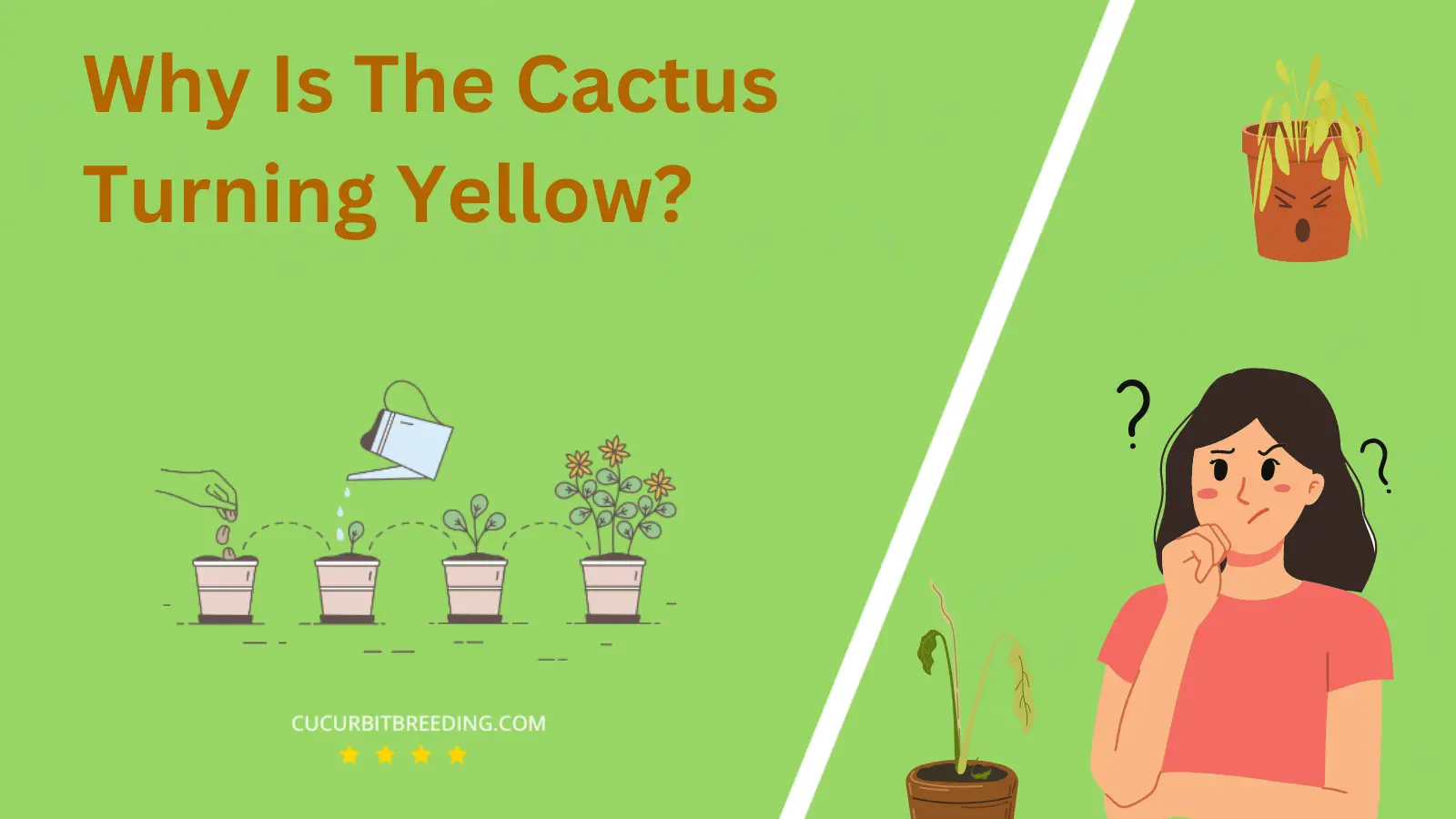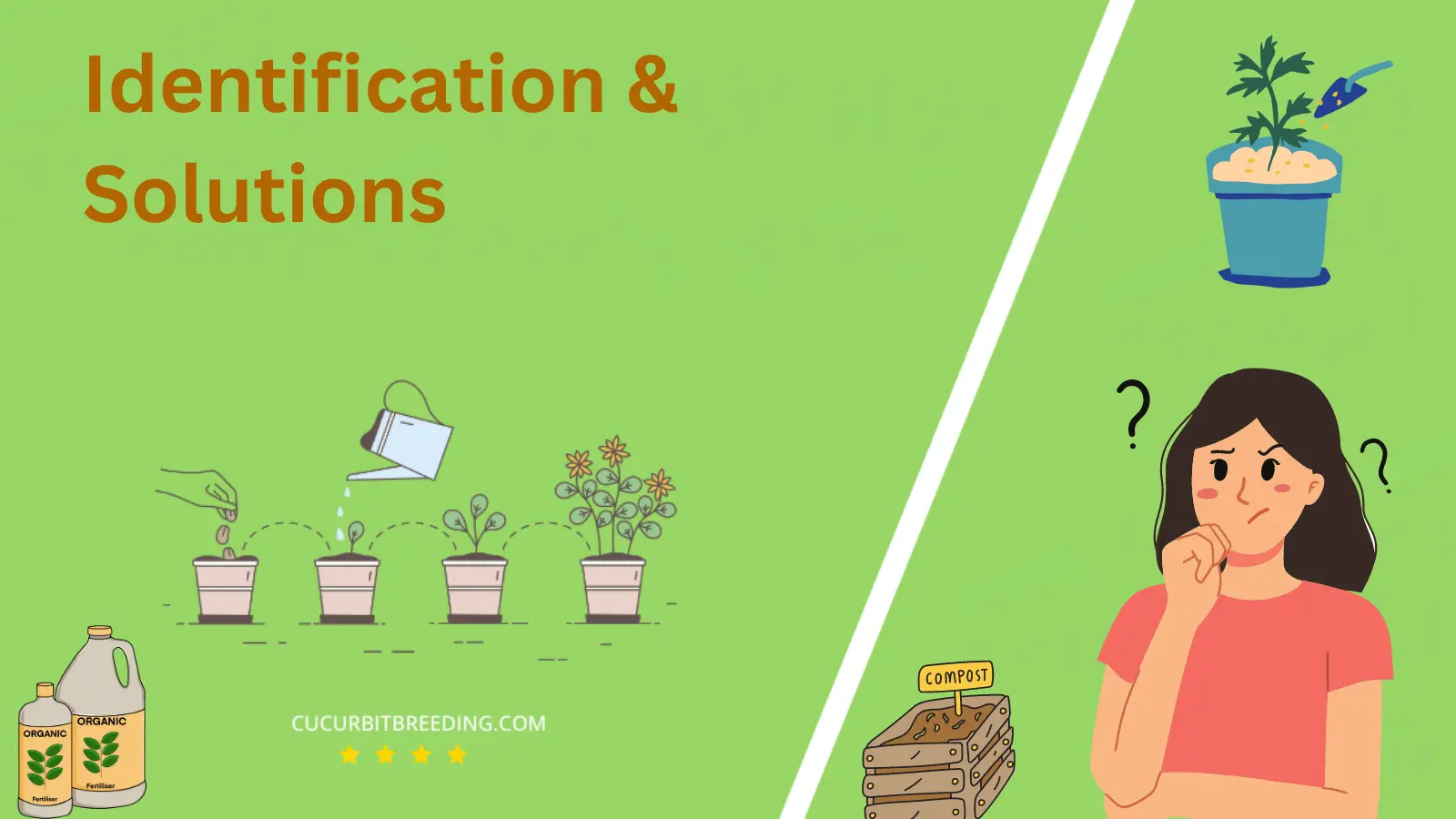
It’s an alarming sight, coming across your vibrant, sturdy cactus turning yellow. This desert jewel, known for its resilience and minimal care, suddenly appears weak and discolored. Whether you’re a novice or seasoned gardener, this drastic change can raise serious questions and concerns about your plant care practices.
Is it merely a natural phase or a cry for help? Understanding the root cause can be quite a mystery, making it a challenging yet intriguing part of gardening.
Why Is The Cactus Turning Yellow?
1. Overwatering
| Description | causes the roots to rot, leading to nutrient deficiency and yellowing of the leaves. |
|---|---|
| Solution | Reduce watering and improve drainage to prevent root rot, leading to yellowing of the cactus. |
Overwatering is most likely the cause when a cactus turns yellow. A cactus is adapted to arid environments, absorbing and retaining as much water as it can handle. When a cactus gets too much water, it can become waterlogged, leading to root rot. Root rot gradually weakens the cactus, causing its stems to turn yellow and soft due to the loss of vigor.
To fix this, it’s important to adjust your watering habits. A cactus in most indoor settings needs to be watered once every 1-2 weeks during growing season and less often during winter. Always check the soil before watering – it should be dry at least 1-2 inches below the surface.
Also, ensure the pot the cactus is in has proper drainage holes. If you’ve been overwatering for a while, the cactus might have root rot. In this case, it would be helpful to repot the plant, remove any rotten roots, and use fresh cactus potting soil. Remember, water is a friend, not an enemy, but too much of it can harm your cactus.
2. Underwatering
| Description | causes the leaf to lose chlorophyll, leading to yellowing. |
|---|---|
| Solution | Increase watering frequency to prevent dehydration and maintain optimal moisture levels for the cactus. |
Underwatering and Its Effects
When a cactus is underwatered, it can turn yellow because it’s not getting enough water to maintain its normal green color and health. Water is crucial for the plant’s overall vitality as it helps in photosynthesis, a process in which the plant converts light into energy. Depriving it of water for a long time causes stress, leading to yellowing.
Solutions
To rectify underwatering, gradually increase the amount of water you give the plant remembering that it’s better to underwater than overwater when it comes to cacti. Start by watering it thoroughly, letting the water drain out of the bottom, then allow the soil to dry out entirely before the next watering. Always monitor the plant’s appearance to ensure it’s responding well to the new watering regimen.
Note: While underwatering is a common cause of a yellow cactus, it’s important to rule out other possibilities such as overwatering, insufficient light, or disease which can cause similar symptoms.
3. Lack of sunlight
| Description | Insufficient sunlight causes yellowing of cactus due to reduced photosynthesis and chlorophyll breakdown. |
|---|---|
| Solution | Increase exposure to sunlight. |
A cactus turning yellow might be a sign that it is receiving insufficient sunlight. As a **sun-loving plant**, cacti use the sun’s energy for photosynthesis, the process that allows them to create food and promote healthy growth. When there’s a lack of sunlight, their ability to photosynthesize is greatly diminished, causing them to weaken and eventually change color to yellow.
The best solution to fix this problem is to **increase the plant’s sunlight exposure**. You can do this by using several methods. One is by simply placing your cactus near a window where they can get enough sunlight. If this method is not possible due to your region’s weather or natural light availability, you can also use grow lights specifically designed for indoor plants. These lights mimic natural sunlight and come in a variety of types including fluorescent and LED. You should also ensure that the light exposure is according to the specific species of the cactus, as some might require less light than others.
4. Nutrient deficiencies
| Description | Insufficient sunlight causes yellowing of cactus due to reduced photosynthesis and chlorophyll breakdown. |
|---|---|
| Solution | Increase exposure to sunlight. |
A cactus turning yellow can be caused by nutrient deficiencies, specifically, a lack of necessary elements for its growth and survival such as nitrogen, phosphorous and potassium. Nitrogen, for example, is fundamental for the development of greenery and if the plant doesn’t get enough, it might turn yellow. Phosphorous and potassium are crucial for flower and fruit production and overall plant vigor – their shortage can also cause a yellowish discoloration.
To solve this issue, it’s important to provide the cactus with a balanced cactus or succulent fertilizer. These fertilizers have correct proportions of nitrogen, phosphorous, and potassium. Usually, fertilizing should be done during the growing season, spring through early autumn, and withheld in the winter. Also consider the quality of the soil. The ideal soil for a cactus should be well-draining and not too rich in organic matter. If the soil is not suitable, repot the cactus in a pre-made cactus mix or make your own with compost, coarse sand, and perlite.

5. Pest infestation
| Description | Increase exposure to sunlight. |
|---|---|
| Solution | Apply pesticide to eliminate pests causing the yellowing of cactus leaves and monitor for improvement. |
If your cactus is turning yellow, it may be due to a pest infestation. Pests such as scale insects, spider mites, and mealybugs can wreak havoc on cactus plants. They cause the plant to become stressed, leading to discoloration, including yellowing. Pests sap essential nutrients from the cactus, depriving it of what it needs to maintain its healthy green color.
To address a pest infestation, first physically remove as many pests as possible from the plant using a pair of tweezers. Then apply a solution of insecticidal soap, following the instructions on the label for dilution and application rates. Repeat the treatment as necessary until the infestation is completely eradicated. If the infestation is particularly severe, you may need to consider using a systemic insecticide, which the plant will absorb and distribute throughout its tissues, killing any pests that feed on it. Remember to isolate the affected cactus from other plants to prevent the pests from spreading.
6. Disease or fungal infection
| Description | The cactus turns yellow due to disease or fungal infection affecting its physiological processes. |
|---|---|
| Solution | Provide adequate sunlight, water sparingly, and ensure well-drained soil to prevent disease or fungal infection. |
Your cactus is probably turning yellow due to a disease or a fungal infection. These conditions can result in the discoloration of your cactus, as they interfere with the plant’s ability to photosynthesize effectively. The most common cause is root rot, often brought on by overwatering or poor drainage, which leads to waterlogged soil. The increased moisture allows fungi to proliferate, attacking the plant’s roots and eventually moving up to the stem, causing it to turn yellow.
Addressing this issue requires some immediate steps. Firstly, you should remove the cactus from its current soil and check the roots. If they’re mushy or dark, you’ll need to trim them back to healthy tissue. Secondly, switch to a well-draining cactus mix for soil to prevent future waterlogging. If the plant continues to discolor, consider applying a fungicide; however, always remember that the best prevention against fungal infections is proper watering. Lastly, you might consider increasing the amount of light the cactus gets, as ample light can help keep fungus at bay.
7. Environmental stress
| Description | causes chlorophyll breakdown, leading to yellow coloration due to reduced photosynthesis and nutrient deficiency. |
|---|---|
| Solution | Provide adequate water, nutrients, and temperature control to mitigate environmental stress on the plant. |
A cactus can turn yellow for a variety of reasons, but an extremely common one is overwatering. Overwatering causes the roots to become waterlogged and oxygen-starved. The cactus’s root system starts to decay, and can no longer absorb nutrients efficiently. This leads to discoloration, and the plant may turn yellow.
On the solution front, you must first reduce the frequency and amount of water you give your cactus. Aim for infrequent watering, allowing the soil to dry out completely between each watering. Additionally, improve drainage in the cactus’s pot by adding perlite or sand to the potting mixture. This can prevent root rot by allowing excess water to escape more easily. Remember that cactuses are desert plants and they are adapted to survive in conditions with little water. Moderation is key with watering your cactus.